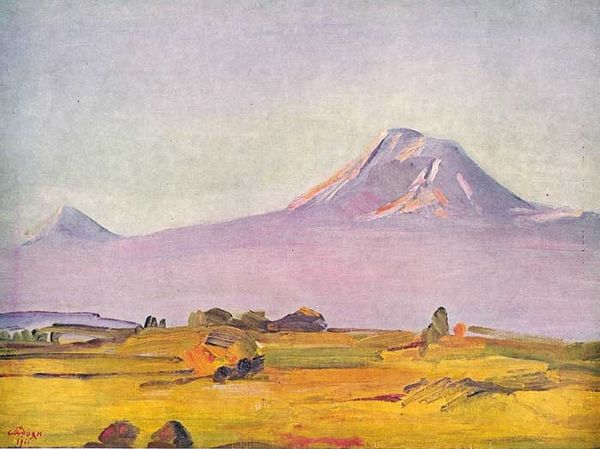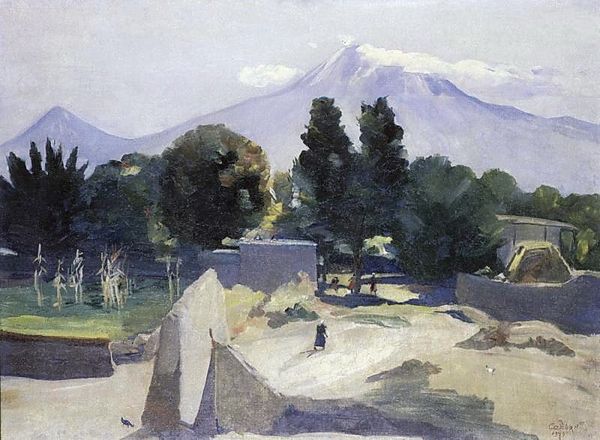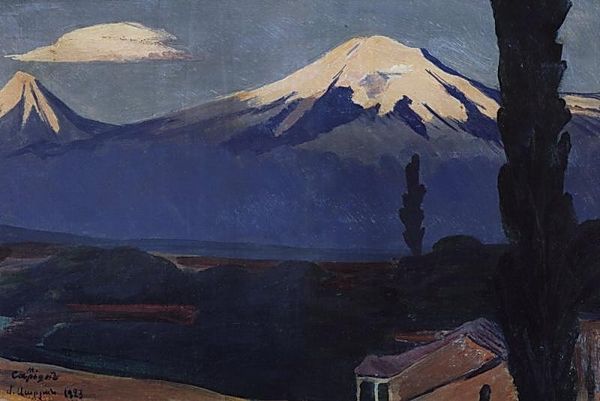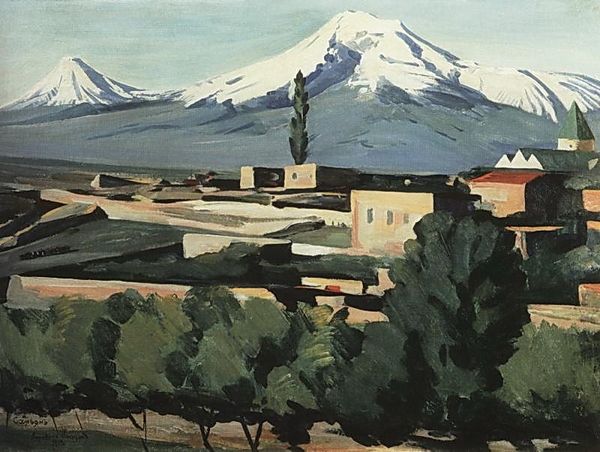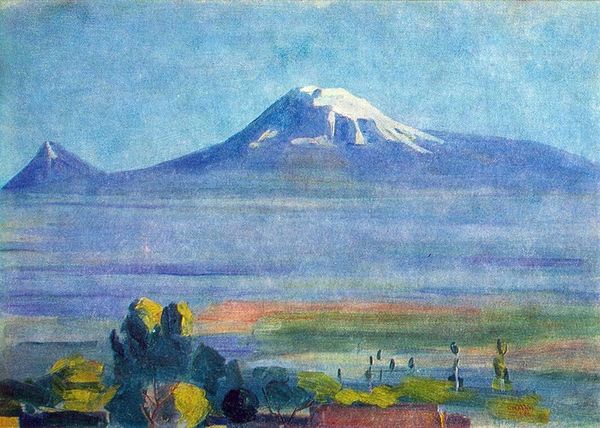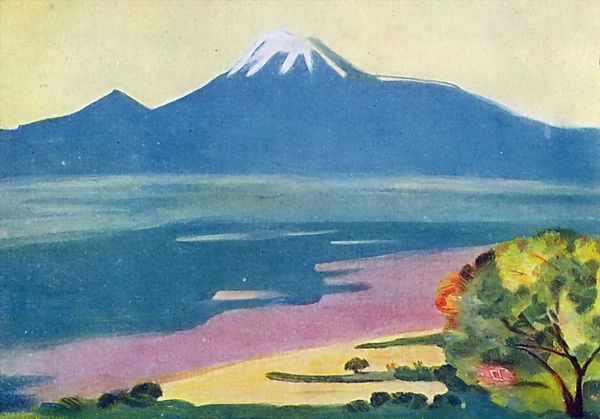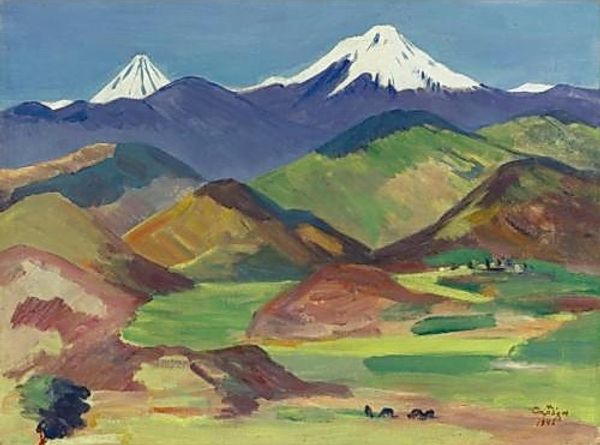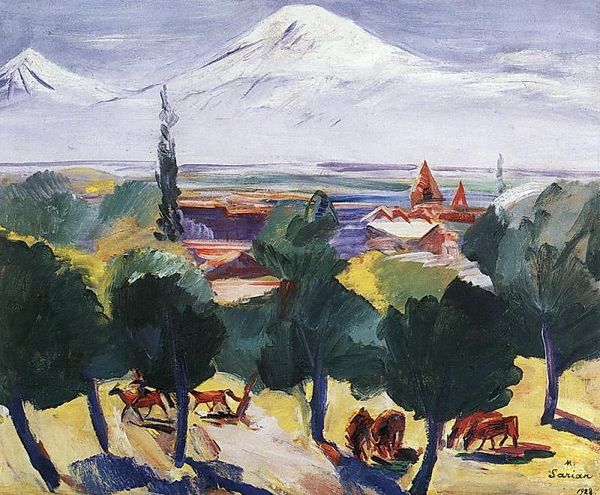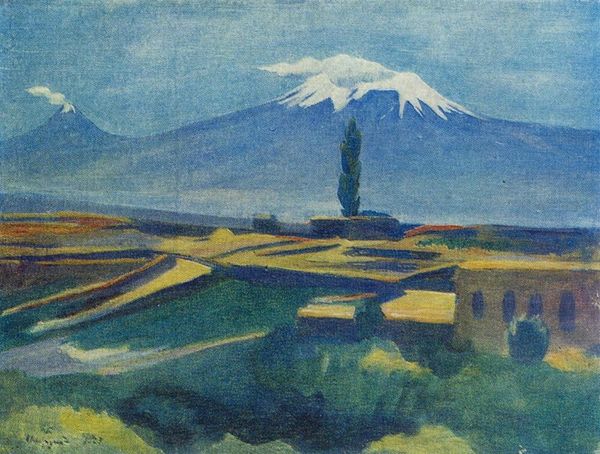
Copyright: Martiros Sarian,Fair Use
Curator: We’re looking at Martiros Sarian’s "Ararat at Spring," an oil painting rendered in 1945. Editor: Immediately, I feel a sense of tranquil distance, maybe even nostalgia. The colors are muted, and the perspective, elevated and panoramic, creates a sweeping sense of place. Curator: Sarian was a pivotal figure in Armenian art, deeply concerned with portraying Armenian identity and history through landscape. Ararat, of course, holds immense symbolic weight for Armenians, particularly after the genocide and during the Soviet era. Its depiction here in 1945 carries the baggage of displacement. Editor: I see that. The almost dreamlike quality, the soft, blurring brushstrokes – they evoke a feeling of yearning, perhaps for a homeland lost or idealized. Even the blossoming trees, while beautiful, suggest a fleeting beauty, a reminder of impermanence and the passage of time. The colors, those subtle greens and pinks are beautiful and feel almost Orientalist to me. Curator: Interesting point. Sarian was part of a generation navigating the complexities of creating national art within a Soviet framework, constantly negotiating cultural memory with the demands of socialist realism. It's work born out of a complex intersection between personal and public identities. There are subtle signs that put this work in dialogue with Soviet Nonconformist art, too. Editor: Yes. The lone figures in the foreground—almost anonymous— hint at the individual amidst a broader socio-political landscape. They aren’t celebratory figures of labor, they seem…smaller, more solitary, which gives the overall impression of a people trying to survive through this Soviet occupation. I'm sure the forced repatriation from diaspora under Stalin weighed heavily on his generation. Curator: Exactly. Understanding this painting necessitates recognizing these complex layers. It’s not simply a pretty landscape. Editor: No, it’s a testament to resilience, remembrance, and the enduring power of cultural symbols in the face of displacement and political control. Curator: Well said, it highlights the powerful intersection between landscape painting, cultural memory and contested identities, urging us to question art's role in articulating difficult national narratives. Editor: Definitely a poignant meditation, prompting a reflection on both beauty and burden within Armenian history.
Comments
No comments
Be the first to comment and join the conversation on the ultimate creative platform.
